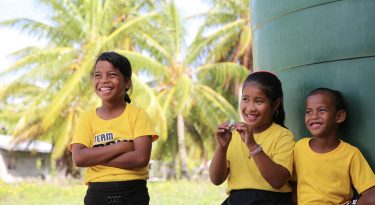NDC Status
Marshall Islands submitted their third NDC in February 2025.
Key highlights from the NDC
The Republic of the Marshall Islands submitted its third NDC in February 2025, confirming its target of at least a 58 percent absolute reduction in greenhouse gas emissions below 2010 levels by 2035, covering all major gases and sectors.
The NDC commits to phasing out fossil fuel subsidies, accelerating the transition to renewable energy, and decarbonizing domestic transport.
As a low-lying atoll nation facing severe climate threats, the Marshall Islands places strong emphasis on adaptation, implementing robust measures to build resilience against sea level rise, extreme weather, and water and food insecurity, while safeguarding infrastructure, communities, and cultural heritage.
Adaptation efforts are guided by local and Indigenous knowledge, prioritizing the right to remain in the islands, disaster preparedness, and nature-based solutions such as coastal replanting and reef rehabilitation.
The NDC details sectoral adaptation plans for energy, health, agriculture, fisheries, and biodiversity, aiming to ensure long-term safety and prosperity for all citizens, with special attention to vulnerable groups including women, youth, and persons with disabilities.
